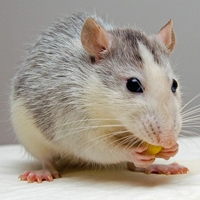Protein-peptide composition in the lungs of rats with hyperhomocysteinemia

Accepted: August 20, 2021
All claims expressed in this article are solely those of the authors and do not necessarily represent those of their affiliated organizations, or those of the publisher, the editors and the reviewers. Any product that may be evaluated in this article or claim that may be made by its manufacturer is not guaranteed or endorsed by the publisher.
Authors
The accumulated data indicate that a high level of homocysteine may be a central pathogenetic factor of chronic obstructive pulmonary disease. In this study, we investigated the effect of hyperhomocysteinemia (HM) on protein homeostasis in the rat lungs. The level of proteins, peptides, total proteolytic activity, as well as protein-peptide composition, were evaluated. HM was induced by daily intragastric administration of DL-homocysteine thiolactone (100 mg·kg-1 of body weight) to albino non-linear male rats for 28 days. Twelve hours after the last administration, the rats were sacrificed and the lungs were harvested. Our findings showed that HM caused the disturbances in the protein homeostasis in the lungs that are manifested by a decrease in the level of proteins in the young and old animals and an increase in the level of peptides in the rats of all studied groups. We found a change in the protein composition in the lung of HM rats - a decrease in the level of proteins with a molecular weight of 50 kDa to 100 kDa simultaneously with an increase in the level of proteins with a molecular weight of less than 50 kDa. Despite the fact that the peptide profile was the same in both control animals and HM animals, the level of individual peptide fractions increased significantly in the rats with HM. Obtained data could contribute to explain, at least in part, the mechanisms involved in the pathogenesis of lung damage in HM.
How to Cite
PAGEPress has chosen to apply the Creative Commons Attribution NonCommercial 4.0 International License (CC BY-NC 4.0) to all manuscripts to be published.

 https://doi.org/10.4081/jbr.2021.9858
https://doi.org/10.4081/jbr.2021.9858



